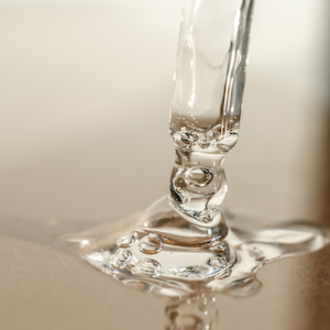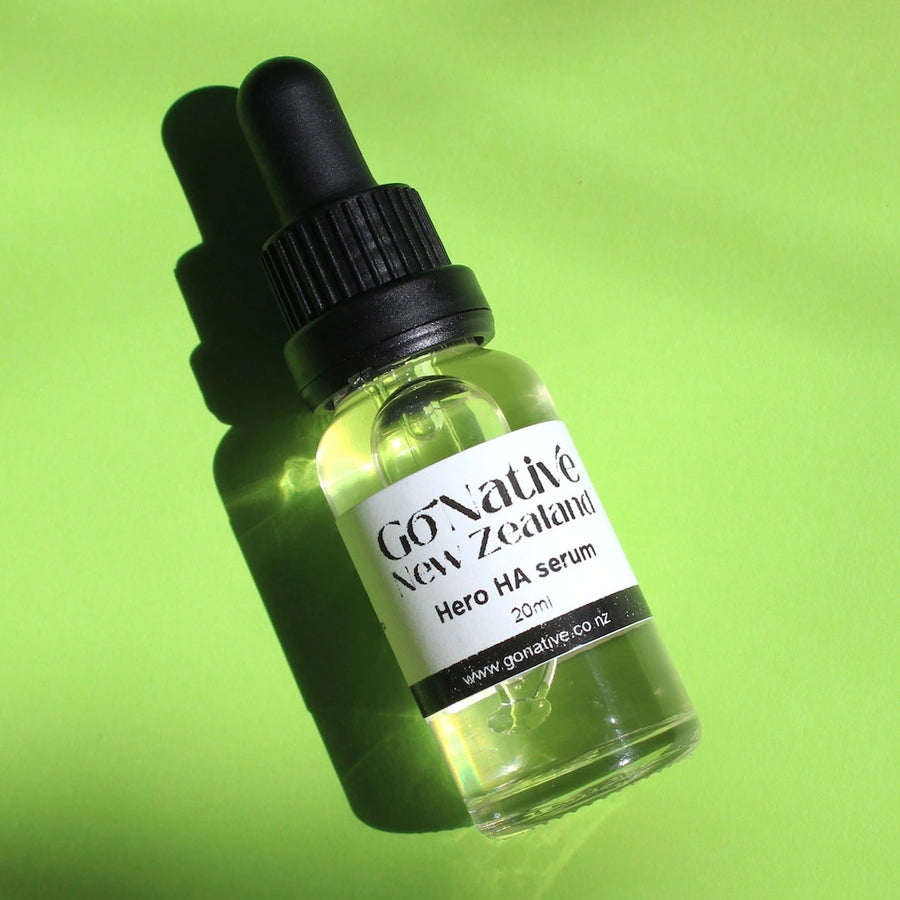How to Make a Base Cream: A Simple Guide
Do It Yourself Base Cream. Making your own cream may sound like an art reserved for experienced formulators, but it’s more simple than you might think! Once you master the basics, you can start adding your own flourishes with ingredients like essential oils, botanical extracts, and powerful actives that suit your skin's unique needs. Let's start by covering the basic steps and ingredients needed for a simple cream formula and explore how you can customise it to make it truly your own. That’s when it starts to get fun!
Understanding the Functional Ingredients
When it comes down to it, making a cream requires just a few key components: water, oil, an emulsifier, and a preservative. Each of these plays an essential role in creating a stable and safe cream.
Let’s keep it simple. Let’s talk about the functional ingredients in a cream and what their purpose is.
Water and Oil: The Foundation of Your DIY Base Cream
To make a cream, you need both water and oil, two substances that don’t naturally mix. Water provides the hydration, while oil helps moisturise because it locks in the hydration. However, because water and oil naturally repel each other, we need the help of an emulsifier to bring them together in a smooth, stable blend.
The Role of the Emulsifier
An emulsifier binds water and oil together to create a unified product. Without it, the oil and water would quickly separate. Emulsifiers are the vital ingredient for achieving that creamy texture we want in our skincare products.
Why Do You Need a Preservative?
Now, because our formula contains water, it needs a preservative. There’s no way around this. If your product contains water it needs preserving. Some people don’t wish to use a preservative in their products, and that’s absolutely fine, it just means that you can’t make products that contain water, it’s just not safe. Remember, percentage is key. It’s essential to use a preservative to prevent bacteria, yeast, and mould from developing. While some people prefer to avoid preservatives, a water-based cream without one isn’t safe for long-term use.
Proper preservation keeps your cream stable and safe for use over time.
You can also choose to use preservatives that are approved for natural and organic formulations
- Geogard 221: An ECOCERT-approved broad-spectrum preservative combining dehydroacetic acid and benzyl alcohol, suitable for natural skincare formulations.
- Geogard ECT: An ECOCERT-approved preservative blend of benzyl alcohol, salicylic acid, glycerin, and sorbic acid, ideal for protecting emulsions and water-based products.
Step-by-Step: Making Your First DIY Cream
With water, oil, an emulsifier, and a preservative, you have everything needed to make a basic cream formulation. However, there are many ways to personalise it! Now that you understand the core ingredients, let’s put them together into a basic cream recipe.
Super Basic Formula:
Phase A (Water phase)
81% | Water
Phase B (Oil phase)
12% | Carrier oil
6% | Emulsifier
Phase C (Oil phase)
12% | Sunflower oil (Carrier oil)
6% | Emulsifier (% may vary depending on emulsifier chosen and desired thickness.)
2% | Stearic acid (Co-emulsifier/stabiliser)
Phase C (Cool down phase)
1% | Preservative
Now let's make it better!
These alone will allow you to create a basic cream formulation, but for this template formula we wanted to give you the most robust base formula possible so we have also included a few more elements:
- Chelating agent (i.e. sodium phytate). A chelating agent binds to metal ions to prevent their interaction with other ingredients, thereby enhancing product stability and efficacy.
- Humectant (i.e. glycerin). A humectant draws and retains moisture, enhancing the hydration properties and texture of the final product.
- Co-emulsifier/stabiliser (i.e. steric acid). In an emulsion, stearic acid acts as a thickening agent and stabiliser, helping to create a smooth, creamy texture and ensuring the mixture of oil and water remains homogeneous.
- Stabiliser (i.e. gum - xanthan or carrageenan). In an emulsion, a gum acts as a thickening agent and stabiliser, helping to maintain the consistency and prevent the separation of ingredients.
- Antioxidant (i.e. vitamin E). Antioxidants prevent the oxidation of ingredients, thereby extending the product's shelf life and maintaining its effectiveness.
These elements will help the overall texture and stability of your formula, helping to best incorporate other active ingredients you might want to add and to help stabilise the formula over time.
Work in percentages - Why?

Working in percentages and weight (grams) is an excellent thing to get used to early on because it is far more accurate than working in volume (mls or drops).
You also need your entire formula to add up to 100% so the rest of your percentages make sense.
Precision - Volume is unreliable because you’re essentially just eyeballing the quantity, but weight is exact. This means you can recreate your formula again and again exactly the same.
Usage rates - All the recommended usage rates of your ingredients will be provided in percentages, so it’s much easier to incorporate ingredients at the correct amount.
Safety - When you’re dealing with essential oils, strong actives and preservatives that have very particular recommended usage rates it could get dangerous to just be guessing how much you’re putting in.
Tip: Be wary of recipes online that use cups, teaspoons or drops for their quantities, or that use a mix of weight and volume, and don’t add up to 100%. It is likely that they are not trustworthy formulas.
All professional formulators work in percentages and weight. It’s actually really easy once you know what you’re doing and I promise you’ll never look back!
We have made this even easier by providing a Batch Size Calculator, which you can find HERE
Recommended Equipment
Now that we’ve got our ingredients let’s look at what we need to put it all together.
Here is a list of equipment which is very useful. Not all are essential and some things you will already have in your kitchen, i.e. you can use glasses or bowls in place of beakers, spoons in place of spatulas etc. But to do things properly you really do need a thermometer, good scales, pH strips, and pipettes are very helpful for precision measuring.
We have an Equipment Starter Kit available with all these things and more, but you don’t need everything to start with, so it may be more economical to buy these items individually.
Useful equipment
- Glass beakers, sizes 50ml and 200ml
- Thermometer
- Mini silicone spatula
- Mini scales - which go down to 0.01g
- pH testing strips
- Stove pot for hot water bath
- Large dish for cold water bath
- Isopropyl alcohol for sanitising
Good Manufacturing Practice (GMP)
“Good Manufacturing Practice (GMP) is the term used to describe the systems manufacturers of medicines are required to have in place to ensure their products are consistently safe, effective and of acceptable quality.” - Medsafe NZ
This just means you want to set up your work station properly and hygienically. For example, before you start, clean your work station and equipment with hot water and detergent, make sure it is completely dry and then sanitise it with an isopropyl alcohol 70% (30% water) solution and leave to evaporate.
Let’s build our formula
Phase A (Water phase)
72.40% | Water (Distilled water)
0.2% | Sodium phytate (Chelating agent)
Phase B (Water phase)
5% | Glycerin (Humectant)
0.4% | Carrageenan gum (Gum/Stabiliser)
Phase C (Oil phase)
12% | Sunflower oil (Carrier oil)
6% | Emulsifier O - Olivem 1000 (Emulsifier)
2% | Stearic acid (Co-emulsifier/stabiliser)
Phase D (Cool down phase)
1% | Geogard ECT (Preservative)
1% | Vitamin E (Antioxidant)
Method of manufacturing
Watch our video on how to make this cream and find the written instructions below.
Gathering and combining ingredients
Phase A
Weigh your Phase A ingredients into a beaker.
Phase B
Weigh out the Phase B ingredients into another small beaker and mix together until it creates a slurry.
Phase A/B
Slowly add the Phase B slurry into Phase A, stirring as you go until everything is combined. This is now Phase A/B.
Phase C
Weigh your Phase C ingredients into a separate beaker.
Method
Stove top - Depending on your stove top and the vessel you have your ingredients in you may be able to put them directly on the element. For example, in the accompanying video I use borosilicate glass beakers and a hot plate and this works just fine. This will heat up more quickly than a water bath so keep a close on eye on it.
Hot water bath - Create a hot water bath on your stove top by filling a pot with water. You want the water level to come above the line of the ingredients in your beakers (not so high that it’s in danger of splashing inside the beaker) to best heat the ingredients evenly. With a water bath you will want to heat it slowly to avoid boiling/bubbling water, which can cause your beaker to move around and even tip over.
Heat both Phase A/B and Phase C separately until both phases reach 75°C.
Once at the correct temperature, take off the heat and slowly pour the oil phase into the water phase and start whisking together to combine.
Keep whisking as your mixture cools.
In this video I wanted to show an example of hand blending the formula but you can also use an immersion (stick) blender, though you generally need to be making larger batches or else the wand won't be able to get deep enough into the mixture to work.
Tip: You can create a cold water bath with a bowl of cold water and ice and place the beaker inside and continue to hand blend as it thickens up.
Phase D
Once the mixture has cooled to below 40°C you can add the Phase D ingredients. Continue to whisk until everything is combined.
pH testing
Once the formula has cooled to <25°C you want to check the pH. Do this by dipping your pH testing strip into solution to check the pH. For skin creams you generally want the product to be between 5 and 5.5. If it falls outside of this range you will need to add a pH buffer solution. You can read our full blog about pH checking HERE.
Leave overnight
The formula will continue to thicken up over the next few hours, sometimes not achieving its full thickness until the following day. Cover it and leave overnight and give it one final stir before you pour it into your containers.
The fun part - making it your own!
Ok, now that we know what we’re doing we can start to build our formula. The best part about making emulsified creams is that, because we’re using both water and oil, everything is available to us, as in both water and oil soluble ingredients.
Water phase substitutions
For this, obviously you can simply use distilled water, or you can use a hydrosol or aloe vera juice.
Oil phase substitutions
You can choose any carrier oil or combination of carrier oils you like*, as long as it adds up to the correct percentage.
You can also use other oil soluble ingredients in this phase, such as butters and waxes.
This section is where you get a lot of freedom to play. The ingredients you choose in this section will most affect the outcome of your finished cream in terms of consistency, colour and, in some cases, scent. For example if you use a harder butter or a wax then your cream will be thicker in consistency than if you used all liquid oils. If you use a deep red coloured oil then your final cream will take some of that colour. If you use a particularly fragrant carrier oil, that can come out in the final product.
*Just be aware of heat sensitivity. Some oils, like rosehip oil for example, can degrade at high temperatures.
Adding actives
There is also lots of room for fun here. You can choose from water soluble or oil soluble actives. You just need to do a bit of research on your chosen ingredients, as to their recommended percentages, pH stability and where in the process to add them.
Things to think about when choosing actives
What is its recommended usage rate?
You will be able to find this formation from your supplier. If you have bought the ingredient from Go Native New Zealand it will be in the description on the product page.
Say an ingredient has a usage range of 2 - 5%, it means you can use it anywhere within that range. It is up to you how much you want to use depending on what you want out of your formula.
What pH range is it effective in?
Make sure that the pH range for your chosen active/s is going to work with the preservative you are using and with each other if you are using more than one active. For example, if you are using two different actives and one works at pH of 3 and one at pH of 7, then they’re not going to be suited to being together in the same formula.
When do I add it?
Actives will generally be added into the cool down phase but some, if they’re water soluble and not heat sensitive, can be added in water phase. This information will be available on the product page.
How to add your active when building your formula
Your formula must add up to 100% total.
In an oil in water (often seen written as O/W) emulsion, which is what we’re making here, water makes up the bulk of the formula.
When you add an active to your formula you want to take out the percentage of the active that you add from your water percentage.
For example, this formula has 72.4% water.
I want to add 1% bakuchiol as my active. So I take it out of the total water percentage: 72.4 - 1 = 71.4
If I want to add 0.5% essential oil to my formula, I take more out of my water percentage: 71.4 - 0.5 = 70.9
And so on.
Don't forget our Batch Size Calculator is here to make this process very easy!
Tip: You generally don’t want your water phase to drop below 60%, depending on the emulsifier that you’re using. But this is just a rule of thumb and there is lots of room for nuance.
So, there you have it!
It's a good idea to practice making a basic emulsion with inexpensive ingredients. But once you're confident that you know what you're doing, the world of botanical extracts, natural aromas and oil and water soluble actives is your playground!













Leave a comment